Papers by Giulia Bellato
Lazio e Sabina 13 - Atti del Convegno Tredicesimo Incontro di Studi sul Lazio e la Sabina (Roma 25 - 27 maggio 2022), 2024
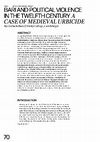
Journal of Architectural Design and History, 2024
In 1156, King William I of Sicily mounted a campaign of destruction against the city of Bari, in ... more In 1156, King William I of Sicily mounted a campaign of destruction against the city of Bari, in Apulia, intending to punish its inhabitants for their insubordination. Despite the citizens’ pleas, “the most powerful city of Apulia, celebrated by fame and immensely rich, proud in its noble citizens and remarkable in the architecture of its buildings” was swiftly transformed into piles of rubble, as a contemporary chronicler recounts. Focusing on the twelfth-century destruction of Bari, this paper engages with the theme of urban destruction in the past. The study of destruction in its various forms, be it because of natural catastrophes, conflicts, economic rapaciousness, or urban renovation, is a topic which has been garnering an increasing amount of cross-disciplinary interest in recent years. Within this context, a vibrant current of work examines the concept of urbicide, or the wilful destruction of a city’s buildings deliberately undertaken to destroy urbanity. While this concept has been employed productively to study modern-day examples, it has been applied much more cautiously to the study of cities in the pre-modern world, leaving a significant gap in the scholarship. Yet, the framework of urbicide can be a valuable tool for understanding destruction in the past. When applied to the Middle Ages, for instance, it can help highlight what constituted “a city” and “urbanity” in the perspectives of a medieval urban resident and allow us to explore the motivations of the destroyer as well as the reactions of observers and contemporaries. Utilizing a combination of chronicle, documentary and material evidence, this paper will explore the destruction of Bari, focusing on the its violent transformations and on the significance of the buildings that were targeted. It will argue that the destruction aimed not so much at obliterating the city in its entire physical entity, but rather specifically at erasing its urbanity, effectively committing an act of temporary urbicide.

The Medieval History Journal, 2020
Hugo Falcandus, the author of the Liber (or Historia) de Regno Siciliae (1154–69), is a contentio... more Hugo Falcandus, the author of the Liber (or Historia) de Regno Siciliae (1154–69), is a contentious figure among historians of the twelfth century. Often disgruntled and embittered, he wrote about the reigns of two Sicilian kings, William I and II, in a text rife with classicising references and personal judgements. Most unusually for a medieval writer from this period, his Liber appears free of any religious elements or framework. This article conducts a search for God in Falcandus’s work and challenges the view that the divine element is entirely ignored by this author. By doing so and through a comparative approach, it also aims at re-contextualising his writings within the production of texts on secular power and authority taking place in the twelfth century. It will show that the apparent lack of a religious framework is a result of the author’s political vision and that Falcandus is a product and a representative of broader ideological changes sweeping through medieval Europe during his time.
eBLJ, 2019
Created in a period of political transition, as England moved from the end of Henry III’s reign t... more Created in a period of political transition, as England moved from the end of Henry III’s reign towards that of Edward I, British Library Add. MS. 30079 is an important witness to the historical events of the late thirteenth century. This manuscript was one of the first chronicle rolls written in Latin recording the history of England through a genealogy of its kings, a model which would then acquire popularity in the Anglo-Norman world during the fourteenth and fifteenth centuries. An investigation surrounding the manuscript’s context of origin will show how Add. MS. 30079 can be a relevant source for a broader historical analysis of the period. This paper considers the dating and provenance of this chronicle roll, putting particular emphasis on the implications of scribal choices and of the circumstances of manuscript transmission.
Posters by Giulia Bellato
Calls for Papers by Giulia Bellato
A CFP for IMC 2021 a strand of papers on climates of violence. Themes of particular interest are:... more A CFP for IMC 2021 a strand of papers on climates of violence. Themes of particular interest are: violence and the material environment, considering the role of the material as an object and realm of violence; violence and the body, examining the body as a tool and subject of direct and indirect struggle; the spiritual manifestations of violence; and mentalities of violence, with a specific emphasis on the interaction of moral and practical evaluations of violence.
Expressions of interest are to be sent to gb589 at cam.ac.uk with an abstract of max. 250 words by 28 August.
Talks by Giulia Bellato
Confraternitas Historica, Sidney Sussex College, Cambridge - 25th January, 2022
Petrified Conflicts (Southern Europe, 1000-1300), Madrid, 13-15 October 2021, 2021
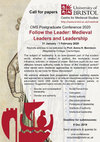
The construction of palaces, monasteries and churches has always been recognised as a marker of m... more The construction of palaces, monasteries and churches has always been recognised as a marker of medieval rulership, fulfilling both symbolic and practical functions. At the same time kings and lords routinely chose to raze entire cities to the ground, demolish buildings or significant landmarks as part of their exercise of power. The deliberate manipulation of the built environment was one of the prerogatives of established rulers and a coveted one at that. But if we trawl through chronicles and annals from numerous eleventh-and twelfth-century Italian cities, we will find a remarkable number of episodes where targeted destruction of buildings, in particular urban residences, occurs in a context where different aspiring leaders are contending for official authority. Numerous regime changes, in cities like Bari, Benevento, Genoa and Rome, would be accompanied by the razing of houses belonging to prominent individuals or groups who were engaged in an attempt to secure a position of leadership. Who was doing the razing and why? How did these events influence a volatile political situation? This paper takes deliberate destruction of buildings as the starting point for an investigation on the connection between the demolition of the built environment and the acquisition of leadership. Studying the discourse surrounding the 'right to destroy' is important for understanding the lived experience of rulership. This talk will explore how these actions were a crucial part of a mise-en-scène of authority by the aspiring ruler. On the other hand, it will show how the destruction of the material urban environment could become also a powerful tool of resistance. In eleventh and twelfth-century Italy, the unmaking of specific buildings was a central aspect of the making and unmaking of civic leaders.
The destruction of the material built environment is an elusive topic to study, by definition a p... more The destruction of the material built environment is an elusive topic to study, by definition a process intended to leave nothing behind.
In this talk I take the targeted destruction of buildings in medieval Bari during political conflict not just as a by-product of said conflict, but as useful strategy in itself to secure power and strategic advantages. In addition, I show that destruction could become a motor for the production of historical sources.
This talk considered the role that instances of destruction of buildings play in the historiograp... more This talk considered the role that instances of destruction of buildings play in the historiography of Medieval Italy. As a fixed point in time, they can represent an insurmountable obstacle to the researcher and the 'end of the road' in the life of a building and of its uses. These destructive events can however be taken as starting points for research, because their rationale and their outcomes reflect specific social and political dynamics playing out within and without the destroyed buildings.
Dissertation by Giulia Bellato
Ma (Hons) Dissertation, The University of Edinburgh, 2017

In recent years scholarly attention has grown around the twelfth-century text 'De Expugnatione Ly... more In recent years scholarly attention has grown around the twelfth-century text 'De Expugnatione Lyxbonensi', an epistolary narration of the 1147 journey to Lisbon and of the conquest of the city by a group of northern European crusaders. This MA dissertation considers the way in which the author of this account and the participants of this expedition reflected upon their mission. This was a religious military campaign aimed at the conquest of a city under Muslim control, and yet not part of the Holy Land, the main focus of Christendom at the time of writing. Through an analysis of the spatial setting of the expedition, the mental geography of the author and its significance, this study answers questions about the legitimacy of the endeavour and the morality of its participants. The setting of the action is more than a mere background, as ‘space’ as a category of analysis becomes a channel to understand the symbolic and religious aspects of the conquest.


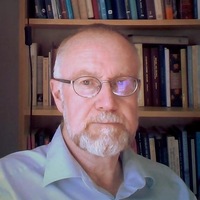
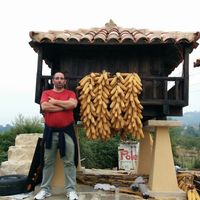

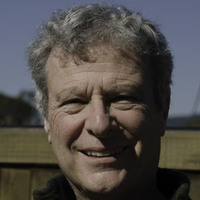





Uploads
Papers by Giulia Bellato
Posters by Giulia Bellato
Calls for Papers by Giulia Bellato
https://submissions.e-a-a.org/eaa2024/sessions/overview/preview.php?id=736
https://submissions.e-a-a.org/eaa2024/
Expressions of interest are to be sent to gb589 at cam.ac.uk with an abstract of max. 250 words by 28 August.
Talks by Giulia Bellato
In this talk I take the targeted destruction of buildings in medieval Bari during political conflict not just as a by-product of said conflict, but as useful strategy in itself to secure power and strategic advantages. In addition, I show that destruction could become a motor for the production of historical sources.
Dissertation by Giulia Bellato
https://submissions.e-a-a.org/eaa2024/sessions/overview/preview.php?id=736
https://submissions.e-a-a.org/eaa2024/
Expressions of interest are to be sent to gb589 at cam.ac.uk with an abstract of max. 250 words by 28 August.
In this talk I take the targeted destruction of buildings in medieval Bari during political conflict not just as a by-product of said conflict, but as useful strategy in itself to secure power and strategic advantages. In addition, I show that destruction could become a motor for the production of historical sources.